By Larry Boulden, Staff Editor
When you specify pneumatics, do you wish you knew in advance how long they would give trouble-free service? As events are unfolding, you may see that wish come true.
Nudged on by the automotive industry, fluid-power suppliers and standards-makers are tackling the linked questions of component longevity and reliability. Last May, the Industry published standards for testing hydraulic components. Now, they have done the same for pneumatics.

New standards aim to establish future reliability benchmarks for pneumatics
industry. Here, technicians at Festo Corp. are testing today for
reliability and function of pneumatic components.
Hydraulics first …
Last May 11, the National Fluid Power Association (NFPA) announced that “A new recommended practice will help the fluid power industry communicate the reliability of hydraulic components to its customers. NFPA/T2.12.11-2-2007, Hydraulic fluid power components – Assessment of reliability by testing has been published and is now available from NFPA.
“The publication of this hydraulic reliability document is one phase in the completion of NFPA’s reliability initiative,” said Marwan Kashkoush, Chairman of the NFPA Board and Corporate V P for Worldwide Sales and Marketing at Parker Hannifin Corp. “When related ISO reliability standards for pneumatic components are published in the next several months, we will have further addressed customer needs for reliability data and positioned fluid power among other motion control technologies.”
…Then pneumatics
While work on the reliability standards started in 2002 in NFPA’s technical committees, ISO/TC 131 took over the development of standards for assessing the reliability of pneumatic components through testing in autumn 2003. A few months ago, these related ISO (International Standards Organization) standards were published for directional control valves, piston rod cylinders and pressure regulators.
“The global fluid power industry has agreed upon methods of assessing the reliability of pneumatic components, specifically directional control valves, piston rod cylinders, and pressure regulators, with the publication of the following International Standards:
ISO 19973-1:2007 (general procedures for assessing the reliability of pneumatic components by testing)
ISO 19973-2:2007 (assessing the reliability of pneumatic directional control valves by testing)
ISO 19973-3:2007 (assessing the reliability of pneumatic piston rod cylinders by testing)
ISO 19973-4:2007 (assessing the reliability of pneumatic pressure regulators by testing)
Like the similar NFPA hydraulic-component reliability document, these standards provide a way of assessing the reliability of pneumatic components through testing and the application of statistical analysis to the resulting data. This lets customers use reliability data to design more systems and machines that provide more uptime and to compare components from different manufacturers.”
Test procedures in these standards are currently being verified through an international round-robin test program. According to published reports, nine companies have volunteered to test directional control valves supplied by two companies. In addition, six companies will test cylinders provided by two companies, and six companies will test pressure regulators supplied by three companies. Test results so far have not been conclusive but the information will likely help improve future editions of the four parts of ISO 19973.
Observers point out that testing alone does nothing to improve reliability. You can test components and develop exquisitely complex reliability data, but only when you work to improve the tested components do reliability and service life increase. However, when reliability standards do become a reality, they will serve as a minimum requirement that similar components should meet. With this in mind, these new standards are a big step in the right direction. The next step will be taken in spring of 2008, as some of the round-robin testing program results become available.
NFPA’s Role in Standards-Making
The National Fluid Power Association represents more than 320 U.S. and multinational organizations involved in the manufacture and distribution of hydraulic and pneumatic products and systems. NFPA coordinates standards development for fluid power at the industry, national and international levels. NFPA administers the approval of American National Standards for fluid power through accreditation granted by ANSI. NFPA also is the secretariat of ISO Technical Committee 131 (ISO/TC 131), which is responsible for developing international standards for fluid power and the U.S. Technical Advisory Group to ISO/TC 131. ISO, ANSI and NFPA standards are guides to aid the manufacturer, the consumer and the user.
National Fluid Power Association
www.nfpa.com
How Suppliers Improve Quality and Reliability
Most vendors have ongoing efforts to improve reliability of the pneumatic components they offer, with the goal of providing long, trouble-free service to users. So while the reliability standards discussed above show promise for the future, efforts are underway now to improve the pneumatics you can specify today. Here are some of the programs we’ve seen that impress us; we recognize that many other suppliers have similar programs.
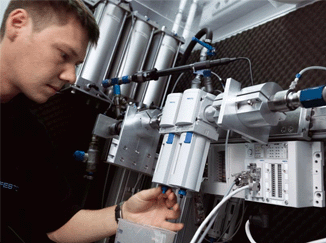
Festo testing results include data on their
“Millionaires’ Club,” with, for example, valves that have completed
over 1,000 million switching cycles or cylinders that have covered a
running distance of over 45,000 km.
Festo: Pneumatics offer reliability backed by long-term testing. This guarantees millions of operating cycles for valves and valve terminals, and thousands of kilometers of running distance, for example, with standard cylinders. Before the products of any series leave the factory, they must pass long-term functional and endurance tests, both during the development phase and in all phases of the product life cycle. In endurance testing, daily functional checks are carried out by acoustic, visual, and tactile means. Leakage rates, characteristic pressure values, switching times, guide backlash, and minimum operating pressure are checked before and after the test and at cyclical intervals during the test. Testing is stopped as soon as either a total failure has taken place or certain limits for defined characteristic values are exceeded, even though the product is fundamentally still capable of operating (tolerance failure). Festo has been carrying out long-term testing for over 30 years. “We currently have around 1,500 items on test at the same time. We store the resulting data on our service-life database, which contains detailed information on over 20,000 test items.” www.festo.com
Clippard: Rich Boutell, Engineering Manager, explains: “We are a small company, with about 10 engineers…. One (engineer) specializes in design of machines to test products. His full-time job is building fixtures and adapting machines for testing. We do 100% testing — we test everything we build.” www.clippard.com
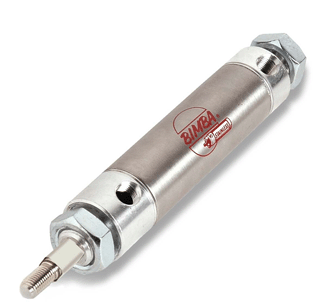
Bimba: Dedicated to providing well-engineered products to its customers, Bimba was the first North American cylinder manufacturer to achieve ISO 9001 certification. Bimba pushes product design and testing to ensure that the user receives the most durable product possible, using such techniques as rigorous Finite Element Analysis (FEA) and meticulous empirical testing. Virtual FEA, through EdgeCAM Computer Aided Machining, allows entire designs to be constructed, refined, tested and optimized before the design is manufactured, substantially decreasing the time it takes for a cylinder to go from concept to construction. Bimba also dedicates an entire section of each facility to thorough empirical testing of production cylinders to guarantee long life. FEA and the empirical tests have increased product accuracy, enhanced insights into critical design limitations and boosted productivity. www.bimba.com
Bimba Original Series cylinders are
designed for long life and reliability. Customer testimonials verify
these models may successfully complete tens of millions of cycles.
Parker: Manfred Stern, V P Innovation & Technology, at Parker’s Automation Group, explains, “Parker adopted our Win strategy seven years ago to ensure premier customer service, financial performance and profitable growth. Winnovation and Winmap are Win strategy tools used to identify product improvements that meet customer demand for highly reliable products. The process focuses Parker marketing, engineering and sales resources to turn customer needs into timely product innovation.” www.parker.com
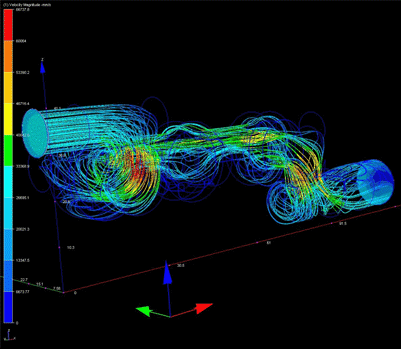
Highly reliable components from Parker Hannifin include the Viking Xtreme-series valves. Tests on the Viking valves included endurance trials of over two million cycles, plus analysis of flow characteristics in the simulation which was used to optimize the final design.
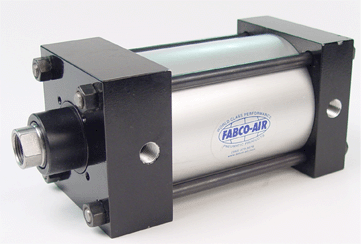
NFPA Cylinders from Fabco-Air feature optional composite cylinder tubes to insure reliability and extend seal life. Zero slipstick avoids problems that metal cylinders encounter when remaining stationary for extended periods. www.fabco-air.com
.: Design World :.
Filed Under: Pneumatic equipment + components, FLUID POWER



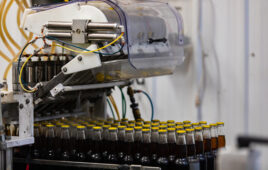
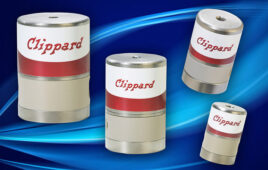
Tell Us What You Think!